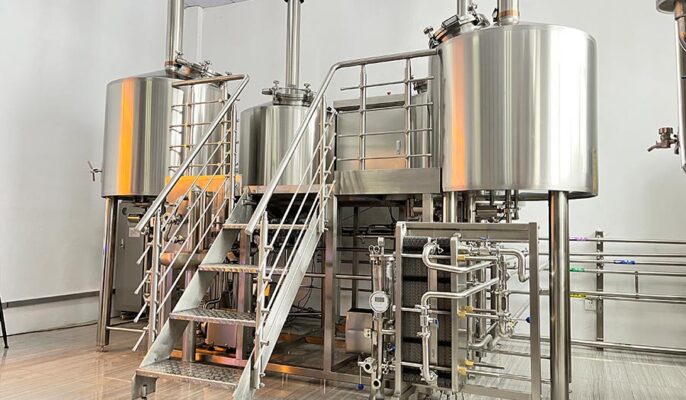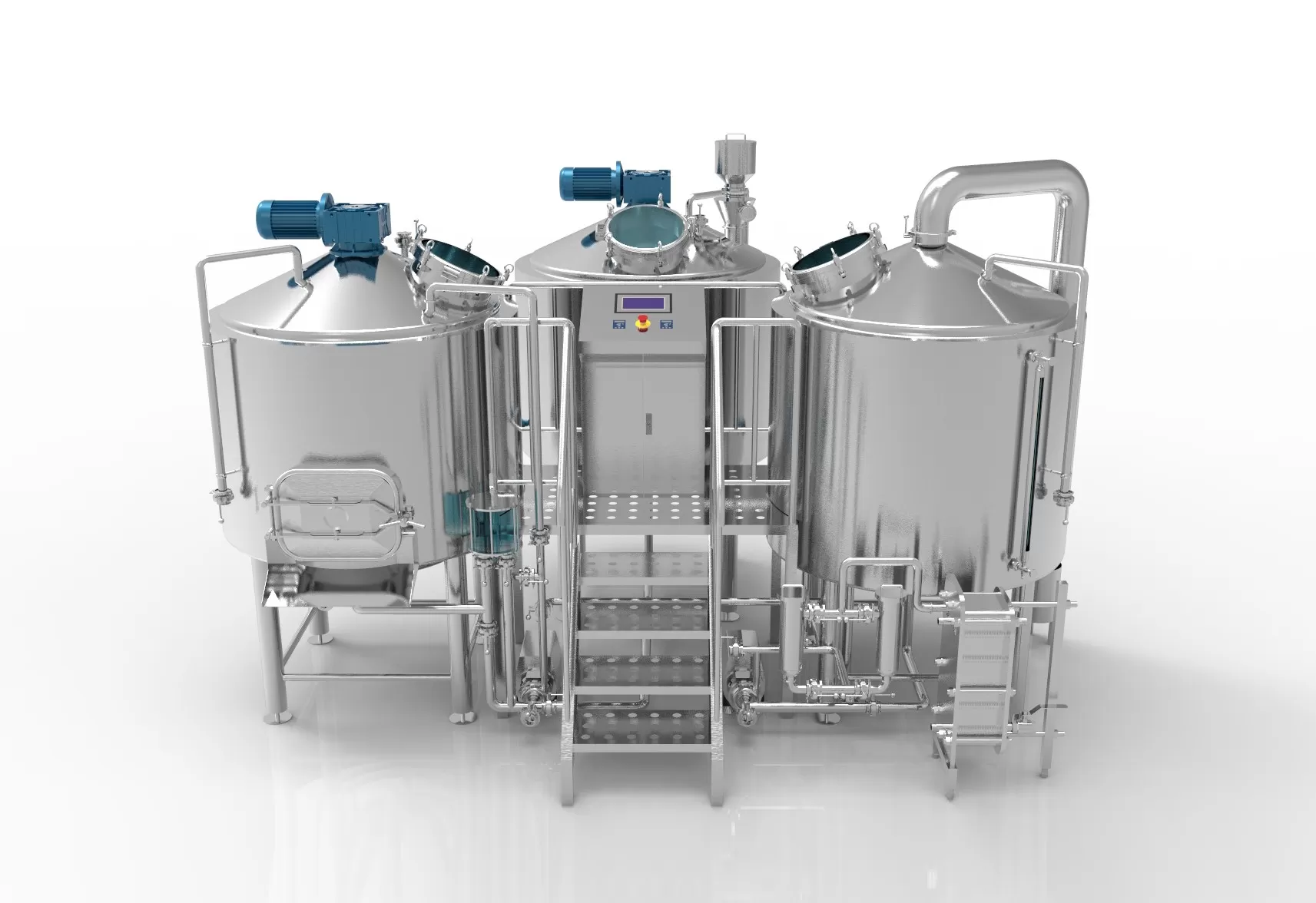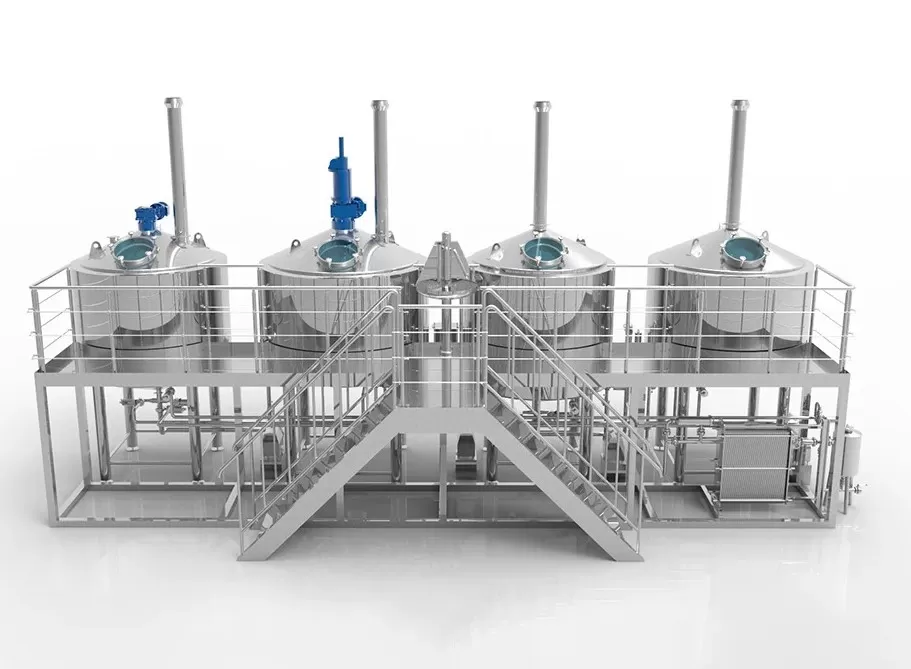Electric brewing equipment is becoming popular in the brewing industry, and brewing beer is a great way to streamline the process and increase your level of control. Unlike traditional brewing methods that rely on gas burners, electric brewing equipment uses electricity to heat the brewing water and boil the wort. In this guide, we’ll discuss how electric brewing works in beer equipment as well as its advantages and disadvantages.
Wat is electric brewing equipment?
Electric brewing systems are all-in-one brewing units that combine the functions of a mash tun, kettle, and hot liquor tank into one heated vessel. This streamlined design simplifies the brewing process and is easy to use for both novice and experienced brewers.
Electric brewing equipment consists of a brewing vessel, heating element, temperature controller, pump, and grain basket or hop spider. The brewing vessel can be a stainless steel kettle, mash tun, or a combination of both. Heating elements can be electric or inductive, depending on the brewer’s preference.
Here is a breakdown of typical components for an electric brewing system:
- Brewing pot: This is the main container for mashing grains, filtering (separating wort from grains), and boiling wort.
- Heating element: The electric heating element integrated into the kettle provides precise temperature control throughout the brewing process.
- Digital Controller: This interface allows you to program and watch brewing parameters such as temperature, time, and pump activity.
- Pump: The pump helps circulate the wort during mashing and filtration, ensuring even heat distribution and efficient extraction of sugars and flavors from the grains.
- Grain Basket or Strainer: This removable component separates the grains from the wort during the filtration process.

Electric brewing equipment process
The electric brewing process begins by using a heating element to heat the brewing water to the desired temperature. Once the brewing water reaches the desired temperature, the brewer adds the grains to the grain basket and places them into the brewing vessel. A temperature controller then maintains the temperature of the brewing water while the grains are mashed.
After the mashing is complete, the brewer uses a heating element to raise the temperature of the brewing water to the boiling point, usually around 212°F (100°C). Once the brewing water is boiling, add the hops to the hop spider and place them into the brewing vessel. The boiling process usually lasts about 60 to 90 minutes, depending on the recipe.
Once the boiling process is complete, the brewer uses a pump to transfer the wort to the fermentation vessel. Yeast is then added to the wort and the fermentation process begins.
Advantages and Disadvantages of Electric Brewing
Voordeel
- The electric brewing system is very efficient, with almost no heat loss during the brewing process. This means you’ll waste less energy and save money in the long run.
- Unlike gas-powered brewing systems where heat can escape through the burner or kettle, electric brewing systems are designed to keep heat, resulting in more efficient heating and less energy consumption.
- Traditional gas brewing systems carry the risk of propane leaks or carbon monoxide poisoning. With electric brewing, there is no open flame or combustion, making it a safer option for home brewers.
- Electric brewing allows for more precise temperature control. This is critical for brewing certain beers that need specific temperature ranges for mashing and fermentation. With electric brewing, you can set and maintain your desired temperature, ensuring the consistency and quality of your beer.
- Electric brewing provides home brewers with a convenient and efficient way to brew beer. With precise temperature control, safety features, and the ability to try different techniques, electric brewing systems are becoming popular among brewing enthusiasts.
Tegenvaller
- The initial cost of an electric brewing system is higher compared to some basic stove setups.
- Electric systems need the use of electrical outlets, which limits their portability compared to propane-powered systems.
- Although generally reliable, electrical components may fail and need repair or replacement.
How to choose the right electric brewing system?
Choosing the right electric brewing system is crucial. A variety of options are available, including pre-built electric brewing systems and DIY setups. Key factors to consider when selecting a system are batch size, power requirements, and control capabilities. It is also important to ensure that the system is safe and reliable.
- Determine your required batch size and choose a system that can accommodate it. Also, consider potential future brewing needs.
- Electric brewing systems range in price from $200 to around $1,500. Set a realistic budget and rank the features that matter most to you.
- If you are new to brewing, a simpler system with basic functionality may be more suitable. As you gain experience, you can explore more advanced features and functionality.
- Measure your designated brewing area and ensure the selected system will fit . If space is limited, consider portability.
- Decide how much automation you prefer. While some brewers prefer a hands-on experience, others may prefer a system with pre-programmed settings and automated controls.
Veiligheidsmaatregelen voor elektrisch brouwen
Electrical Safety Tips
Working with electricity requires extreme caution to ensure your safety. When setting up an electric brewing system, be sure to follow the manufacturer’s instructions and consult a qualified electrician if needed. Always use a ground fault circuit interrupter (GFCI) to protect yourself from electrical shock and cut the risk of an accident. Check your equipment for any signs of wear or damage and replace any faulty components .
Veilig omgaan met brouwapparatuur
Too to electrical safety, it’s also important to operate brewing equipment to avoid injuries and accidents. When working with hot liquids, always use heat-resistant gloves and take care to prevent burns. When moving heavy pots or kegs, follow proper lifting techniques to avoid strain or injury. Make sure to store chemicals and cleaners in a safe place away from children and pets. By prioritizing safety, you can get the most out of your electric brewing experience without any unnecessary risks.
Veelgestelde vragen
Q: How much does an electric brewing system cost?
A: Electric brewing systems range in price from $200 to around $1,500. Price usually correlates with features, functionality, and build quality.
Q: Can I brew good beer with an electric brewing system?
A: Of course! When used , electric brewing systems can produce high-quality beer. Precise temperature control and a consistent brewing process can even lead to more consistent and predictable results compared to traditional methods.
Q: Is the electric brewing system easy to use?
A: Due to their simplified design and controls, electric brewing systems are generally easier to use than traditional brewing methods. Yet, the level of ease of use may vary depending on the specific system and its capabilities.




